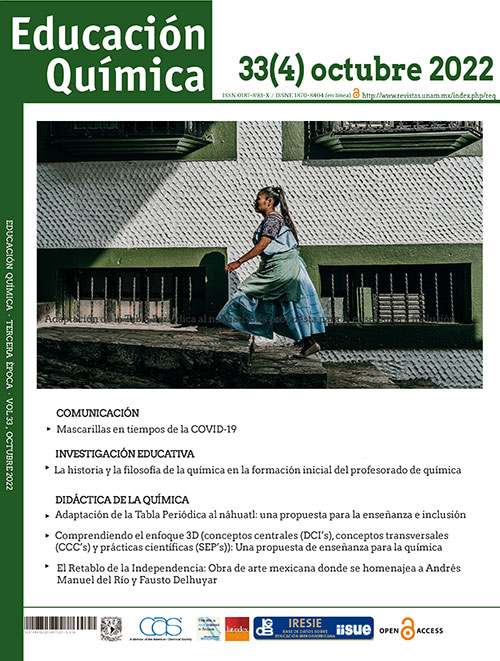El Retablo de la Independencia: Mexican artwork honoring Andrés Manuel del Río and Fausto Delhuyar
Main Article Content
Abstract
After introducing the work of art known as Retablo de la Independencia, painted by the Mexican muralist Juan O’Gorman in 1961, this article highlights how it can be used as an educational and outreach resource that unites art, history and science. Specifically, the painting, which represents the Mexican independence movement, features, among many others, portraits of Fausto Delhuyar, Andrés Manuel del Río and Alexander von Humboldt. These personages can be used, for example, to highlight their role in the discovery of the chemical elements wolfram or tungsten (by the first one, together with his brother Juan José) and erythronium (later known as vanadium) by the work of del Río, although in this case, it would take three decades for the discovery to be verified due to the wrong mediation of the naturalist von Humboldt.
Article Details
Citas en Dimensions Service

Educación Química por Universidad Nacional Autónoma de México se distribuye bajo una Licencia Creative Commons Atribución-NoComercial-SinDerivar 4.0 Internacional.
Basada en una obra en http://www.revistas.unam.mx/index.php/req.




